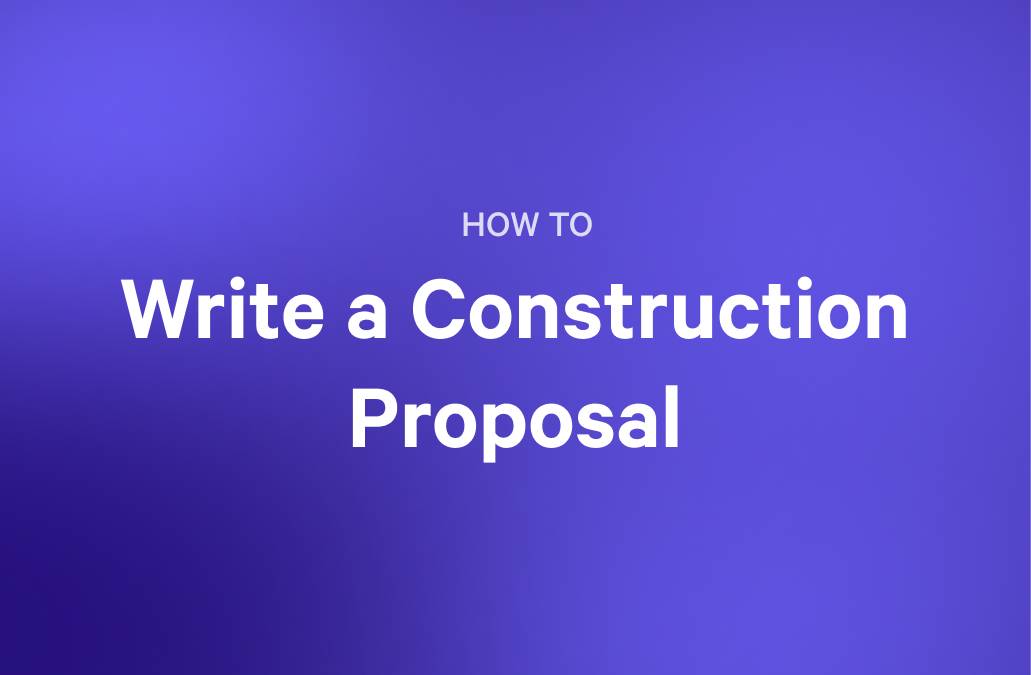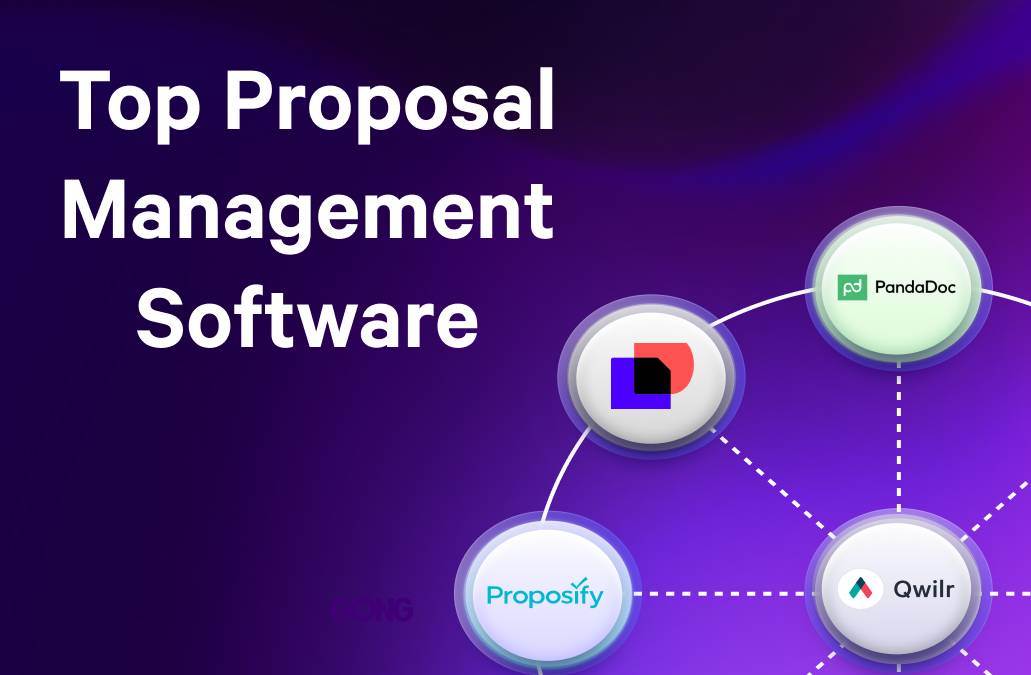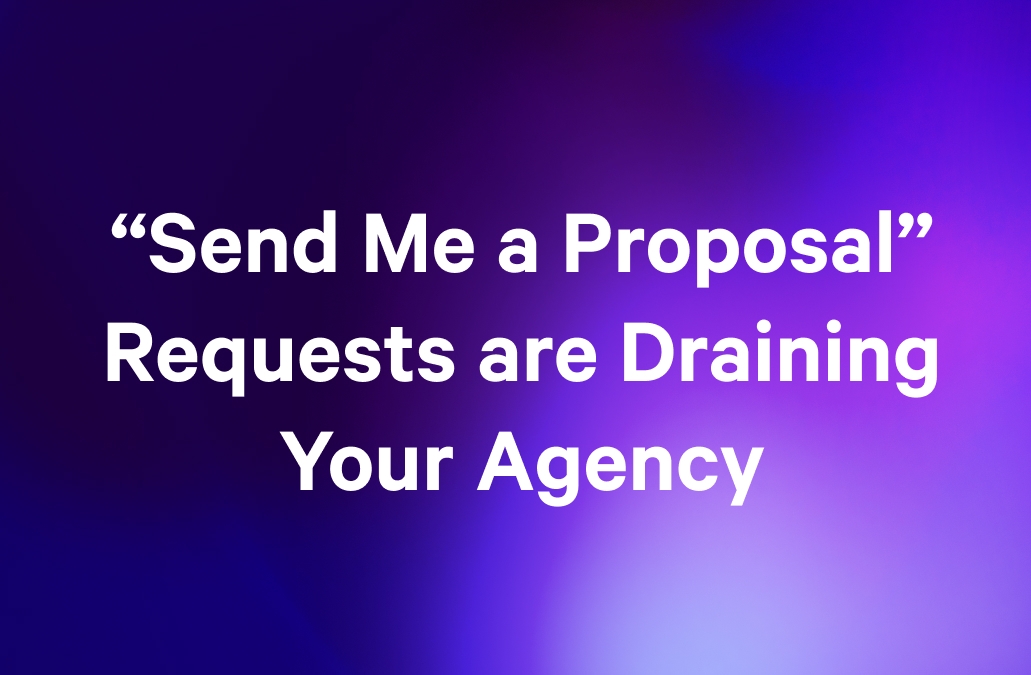If you're in a partnerships or event management role, you know how fierce the battle for attention (and resources!) is. You also know how crucial it is for your business to get the sponsorship it needs.
Writing a compelling sponsorship proposal is your gateway to increasing the positive responses from sponsors – and helping you drive your cause further.
Where do you start, though? What information do you include to ensure prospective sponsors can’t turn you down?
Here's a comprehensive guide on how to secure funding with intelligently-crafted sponsorship proposals.
Before writing the proposal
If you want your sponsorship proposal to be a clear winner, you have to spend some time preparing. Start by thinking about what you can offer to potential sponsors. For in-person events, remember that physical signage, swag, and other elements of your event can be costly to produce.
Social media mentions, access to a delegate/attendee list, and digital signage (as long as your venue has screens) can be more cost-effective draws for potential sponsors.
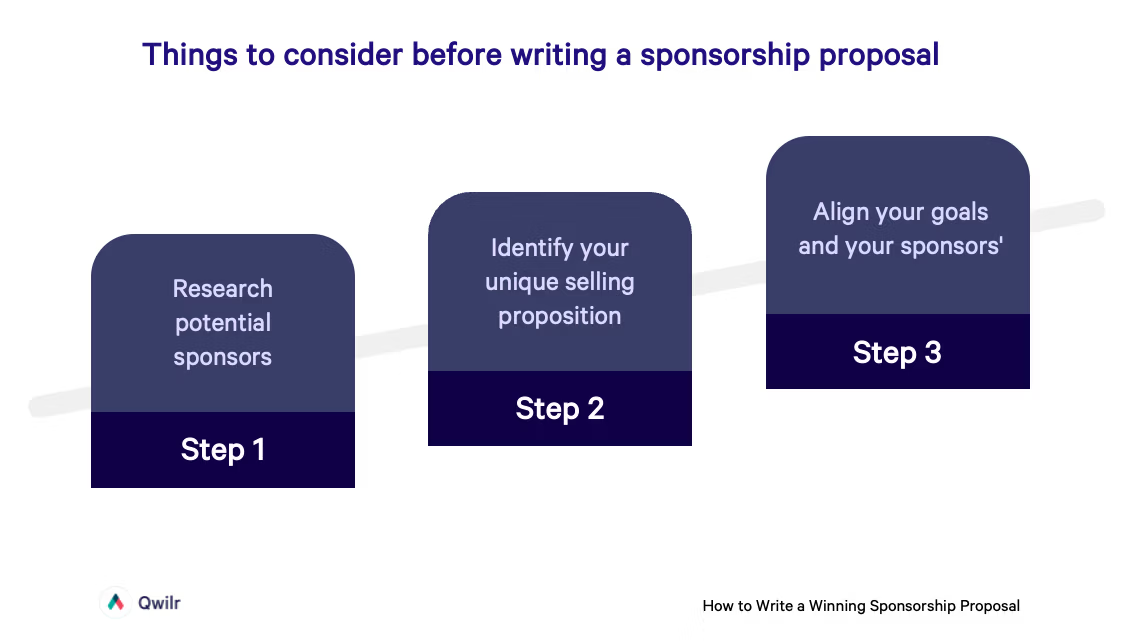
Research potential sponsors
Before you start your outreach, you want to know as much as possible about the potential sponsors you’ll approach with your proposal. Start by considering who will be the target audience for your engagement and for which companies there is commercial value in reaching your target audience. Then list companies or individuals who might benefit from sponsoring your event. For example, if you’re putting on an event targeting marketing professionals, you might want to invite MarTech companies, creative agencies, or even universities and continuing education providers to participate as sponsors.
To craft the most compelling sales proposal for your prospects, you’ll want to do some research. Who are their target audiences? Have they sponsored similar initiatives previously? What might they want to get out of a sponsorship?
This step might take some time as the answers to these questions will differ for every potential sponsor.
Identify your unique selling proposition
Regardless of the type of initiative you're planning and the cause behind it, you want to make sure your proposal is centered on a unique selling proposition: a simple, comprehensive, and compelling message that will make your proposal stand out.
For instance:
- If you are organizing an initiative for a nonprofit or NGO, your unique selling proposition could be about the reach and exposure your events have had in the past.
- If you are organizing an initiative for a sports team, your unique selling proposition could be about the opportunity to reach a large and diverse audience.
- If you are organizing a festival, your unique selling proposition could be about the cultural and artistic impact of such an event and the kind of audience it will attract.
Align your goals and your sponsors'
Once you know what makes your initiative unique and what your potential sponsors are interested in, it's time to align those goals. What do they expect from the sponsorship? And how can you fulfill it? A partnership built on mutual understanding and trust will benefit both parties, so emphasize that in your proposal.
For example, if you are planning a concert to raise money for a specific cause, you could speak about the impact this will have on the community and how associating your sponsors’ brand with it will help them be more appealing to their customers. In a similar vein, you could talk about the kind of audience your event will attract and how they are a great match for your sponsors’ thus, helping them gain relevant exposure and continue to build brand awareness.
Furthermore, you’ll want to consider how your audience and potential sponsors align – this helps you create a stronger argument for your sponsorship proposal. When your target audience is a match with your sponsors’, the latter will be more likely to pitch in and help you meet your sponsorship sales goals.
You can see Qwilr's Sponsorship Proposal Template below as an example.
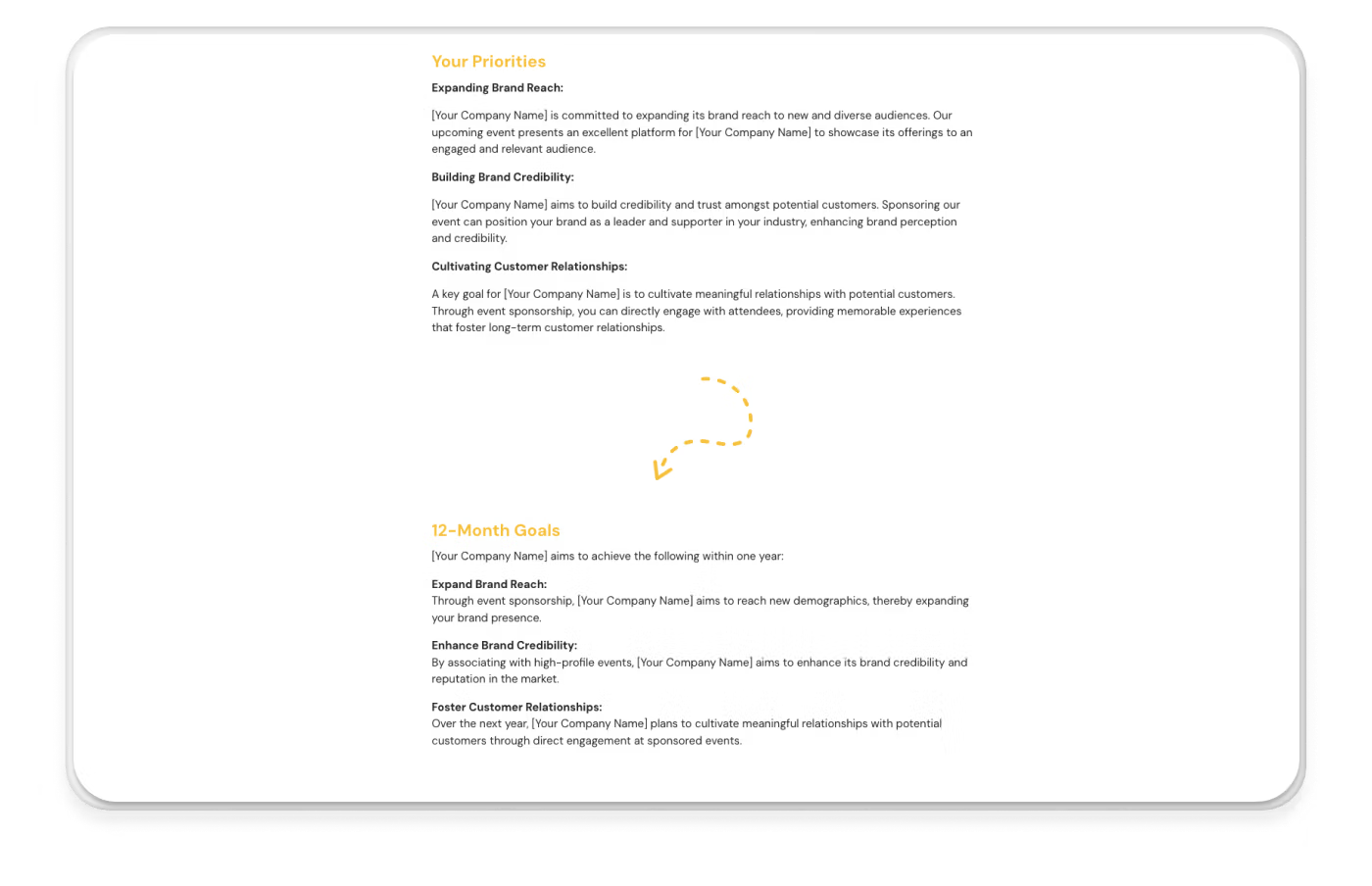
Determine the best time to reach out
As with many things, in sponsorship sales, timing is everything. When you reach out is just as important as anything else -- not all timing is equal when it comes to closing sponsorship deals.
If you’re selling sponsorships in a highly competitive environment, it's important to get in before all the funds are allocated to your competitors. And, if you’re selling high-ticket sponsorships, you also need to factor in budget season for your prospects and start helping them plan to invest in advance. If you’re asking for a six or seven-figure sponsorship - it might take months or even years to sell this to a prospect.
The elements of an effective sponsorship proposal
You’ve done your homework and have a list of qualified prospects. Now, it's time to start writing the proposal.
Here are the elements your sponsorship proposal should include:
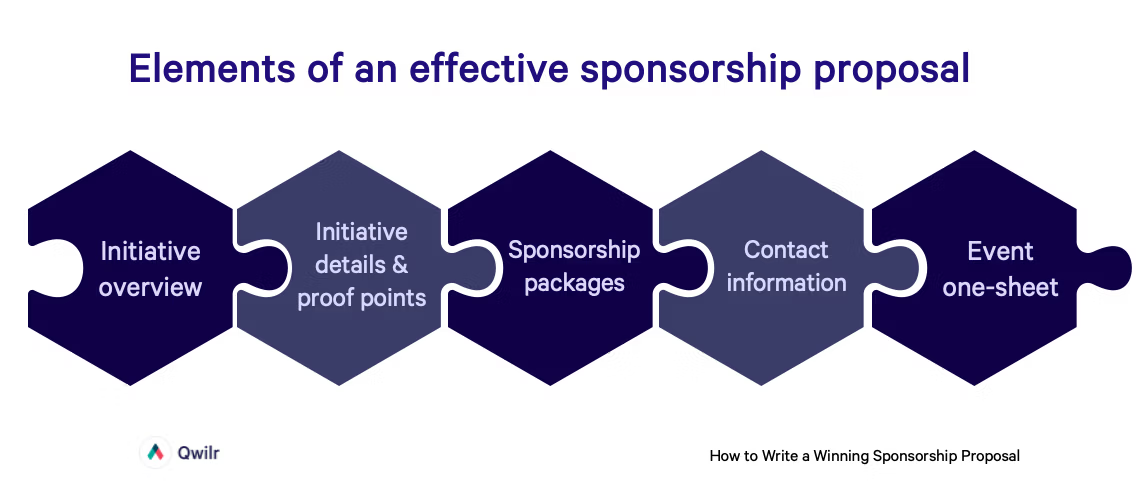
1. Initiative overview
This section of the proposal should paint a picture of your initiative or event for your potential sponsor and have some clear hooks. Use descriptive language and really set the scene. How many people will attend, what will the vibe be, are you having anything special to eat or drink, and how will your potential sponsor be able to take part in the event?
2. Initiative details & proof points
Once you’ve set the scene (and hopefully given your sponsor some serious enough FOMO that they can’t say no), you want to get into the nitty-gritty. You have already shared the bigger picture, but your potential sponsors must understand all the details about your initiative and logistics. This should include
- Estimated attendance
- Attendee demographics
- Initiative details and logistics
- How tickets or registration will be handled and promoted
- What is the anticipated impact of the event?
You may also want to include some more background on the initiative (assuming it’s not a first-time event), and some info on you and your team’s background when it comes to event planning. To entice sponsors to sign, you may also detail past event successes, including past sponsors and the results they achieved by partnering with you. This will highlight your track record in similar fundraising initiatives and striking sponsorship deals and demonstrate that your past events were successful.
3. Sponsorship packages
Next, you’ll list the various tiers of sponsorship options or “packages,” as we call them. More often than not, organizers offer three tiers of sponsorship levels (or packages.) Each option provides a higher level of visibility for a higher financial commitment.
In addition to the three main tiers - sometimes referred to as presenting sponsor, supporting sponsor, and/or sustaining sponsor, you might have some smaller sponsorships available. For example, if your initiative is a golf outing, you might sell individual sponsorships for each hole as well as the drink cart or even the reception that follows. For a charity ball on the other hand, you might have someone sponsor the beverages, music, desserts, or other interactive elements at the event. These options allow sponsors with smaller budgets to participate and increase the revenue that your team can bring in from having more sponsors.
While cash sponsorships are critical to success, in some cases, sponsors may provide services instead of financial support. This could come in the form of food and beverage, printed signage, photo booths, entertainment, or anything else you might need to make your event a success.
Finally, tell your prospects what happens when they decide to proceed with one of your sponsorship packages. With a Qwilr sponsorship proposal, it’s as simple as one click to choose a preferred package and confirm their commitment. You can even take them straight through to the payment portal of your choice with our integrations.

4. Contact information
Last, don’t forget to include your contact details, such as your name, title, phone number, email address, and possibly your website or a link to learn more about your nonprofit status (if that applies).
You want to make it easy for prospective sponsors to reach you if they have questions or want to discuss packages further. If you can customize sponsorships to someone’s goals and budget - make sure you’ve said so and let people know (maybe through the call to action section above) that you’re open to further discussion or negotiations.
Remember also to include details about your sponsorship process and the next steps. This will help your potential sponsors take action as soon as possible (rather than delay with too much back-and-forth communication).
5. Event one-sheet
Ideally, your sponsorship proposal should also include an event one-sheet: a quick, compelling, and comprehensive overview of the most important details your covers. Your main contact may want to share this sheet with others in their organization who will either attend your event or help execute your sponsorship requirements.
Keep in mind that this one-sheet is often crucial, as it is the first thing potential sponsors may check (and thus, it needs to be flawless.)
Some of the essential details to include in your one-sheet are:
- Event name and date
- Event overview
- Sponsorship opportunities
- Audience
- Reasoning for sponsorships
Keep things concise and clear for this document. Your goal is to provide an overview of your next event and give decision-makers the necessary information. This is particularly important when looking for corporate sponsorship, as large businesses have to deal with many sponsorship requests and sift through them as efficiently as possible.
Strategies to optimize your sponsorship proposal
Now that you know what should be included in your proposal, it's time to discuss optimizing your sponsorship proposals for maximum success. Here are a few strategies and selling points to consider:
Tailor your proposal to each potential sponsor
Cookie-cutter sponsorship proposals won't cut it -- with lots of events seeking sponsors; you have to make sure your proposal stands out.
You should maintain the ability to customize your proposal for each potential sponsor. This doesn’t mean you have to build every proposal you send from scratch, though! You can use an event sponsorship proposal template as a starting point, or use Qwilr's AI proposal generator, which is free to try. But you also need to tailor your proposal for each potential sponsor so it resonates with them and speaks to their interests. Show them that you know who they are and what they want. In other words, demonstrate the value of the partnership.
You can do this by opening your proposal with a personalized cover letter and highlighting the things that will be most compelling to the individual reading your proposal.
For example, if you are planning a sports event and you reach out to two potential sponsors, one of which sells bakery products while the other sells sports shoes, your unique selling proposition should likely be different. For the bakery products, you could focus on all the event attendees and how the bakery could introduce their products to those who haven’t tried them before. For the sports shoes, you could tap into showing off the shoes as worn by the athletes.
“You want to show your humanity and make an emotional connection because a company is not going to sponsor you; it is a human being in that company that is going to decide to sponsor you.”
Linda Hollander, in the SmallBizChat podcast.
Use stories and data
People don’t just remember facts and figures; they remember feelings and stories. So take the opportunity to weave in an inspiring story about what happens when organizations sponsor your initiatives. Make your proposal sound less like a stuffy sales pitch and more like a personal story where your sponsors are the heroes.
Furthermore, supporting your story with data points in your sponsorship proposal will make it more persuasive, trustworthy, and professional. Add relevant facts about your initiative -- the number of attendees, social media engagement, average viewership rate (if applicable), and so on. This will help potential sponsors understand why sponsoring your event is a smart business decision.
Incorporate measurable goals into your proposal
Your sponsors should know you mean business -- so include measurable goals in your sponsorship proposal. Things like brand awareness can be hard to quantify, so even if that’s a part of your angle, find some key performance indicators your potential sponsors can look to so they understand the impact of their spending.
For example, by attaching metrics to each of the packages you offer in your proposal, you give sponsors a way to assess the success of their investment. You can include numbers like number of email subscribers acquired, website visits, advertising impressions, press coverage, etc. This will show them that partnering up with you means results and will increase your proposal's chances of acceptance.
Add visual elements for better engagement
We’ve all heard the expression, show, don’t tell. And it’s true even in a sponsorship proposal. Humans are very visual -- our brains process images some 60,000 times faster than text. Yes, text is important, and yes, if it's done well, potential sponsors will definitely pay attention. But visuals really bring your proposal to life and add more emotional engagement.
Incorporate images, illustrations, videos, gifs (if appropriate), graphs, or infographics -- anything that helps you tell the story of why sponsoring your initiative is a great idea. Visuals will make your content easier to consume and, thus, more likely to be remembered by sponsors considering investing in your event.
If your initiative is new, consider stock photos (with a heavy disclaimer) that illustrate the vibe you’re going for. Or, if you have the budget, invest in some renderings of what your event will look like in your venue (complete with your sponsor's signage or activations in the picture).
Check out our video on how to nail your sponsorship proposal with a walkthrough of the Qwilr sponsorship proposal template:
How to increase your sponsorship proposal win rates
Writing sponsorship proposals may feel like you must talk about yourself and your project a lot. In reality, however, each custom proposal should put your potential sponsor at the center of your offer.
Here are some elements that will help you achieve this:
1. Offer something that will help them win
When deciding what goes into a sponsorship package, focus on the sponsors you hope to secure. What are they hoping to gain from being a sponsor for your initiative?
For a smaller conference, most will want basic exposure. Offer a package that's focused on mentions of the company and visuals of their logo. Others will want to build their authority as an expert in your field. Give them opportunities to share knowledge as a speaker, master of ceremonies, or even the host of physical spaces for workshops, panels, or networking.
Make your proposal all about them—and remember, you’re offering a platform for their brand to speak directly to an engaged and possibly hard-to-reach audience. Work that as your competitive advantage.
2. Make your prices fair
Fair pricing may be relative. What sounds really expensive to one prospect may be a drop in the bucket for another, so it’s important to do your research when setting prices for sponsorship packages.
Look at other initiatives or events, competitors or even ask people you know what they have paid to sponsor similar events. Using this information, adjust the pricing you hear to cover your offering. For example, if you learn that your dad’s insurance company paid $750 to sponsor a tee at a local charity golf outing in Merion, Pennsylvania, that attracts 500 golfers and 1500 people for a dinner reception, use this data to set pricing for your event accordingly. Maybe your event is just outside New York City at a larger golf course with more people - so you set tee sponsorships at $1750.
3. Decide on numbers and availability
Ideally, you'll offer a range of packages. That also means you’ll need to decide ahead of time how many of each package you’ll need to and want to sell. It’s not unusual to limit the offering for the higher tier packages. In theory, it feels like that might equate to less revenue.
But, by reducing the number of large sponsors, you’re creating a sense of exclusivity and offering a limited number of sponsors a special option - which allows you to sell these big packages at premium prices. This way, big spenders will feel valued, as if they’ve got the best seat in the house.
4. Make it a custom offer
Don’t use the same generic tiered packages for every sponsor you approach. Add in a special section called “Just for you,” where you suggest a special perk that only this sponsor could take part in. Make sure this perk aligns their mission with the theme of your initiative.
This is where you can get creative and encourage your sponsors to add that special spark that will make your initiative stand out.
5. Offer perks before, during, and after the event
Remember to offer your sponsors the ability to get exposure at various times throughout your event as part of your packages.
Before the event launches, the common places to promote your sponsors are on your event invitations, website, as part of your ads, and in your social media posts.
During the event, most sponsors expect to get at least their logo present in the main traffic areas. They might also have a speaking slot at your event or event or a prime exhibitor space.
After the event, you can mention your sponsors once again. Thank them in an email sent to all attendees where you can also share any professional photos from the event.
You may also want to run a post-event survey to collect data and feedback or testimonials about your event which can be a valuable perk that’s very appealing to prospective sponsors.
An example of a high performing sponsorship proposal
Qwilr's sponsorship proposal template is designed to simplify the process for organizations and individuals looking to craft compelling sponsorship offers.
For a tailored approach, try our AI Proposal Generator to create a customized sponsorship proposal in minutes.
Leveraging data and analytics in your sponsorship proposal
In the era of data-driven decision-making, using data can significantly enhance the appeal of your sponsorship proposal.
Here's how you can use data to engage potential sponsors and make your proposal stand out:
- Audience insights: Include detailed analytics about your event's audience, such as demographics, interests, and behaviors. This information helps sponsors understand who they will be reaching and how well it aligns with their target market.
- Past event performance: Share data from previous events, including attendance numbers, social media engagement, and any measurable outcomes for past sponsors. This historical data provides a track record of success and can build confidence in your event's potential.
- Market research: Present market research that highlights the relevance and timeliness of your event. For example, if your event is focused on sustainability, provide data on growing consumer interest in eco-friendly products and practices.
- Sponsorship impact projections: Use analytics to project the potential impact of sponsorship, such as estimated brand exposure, lead generation, and conversion rates. This can help sponsors quantify the expected ROI.
- Post-event reporting: Commit to providing comprehensive post-event analytics to sponsors. This can include metrics like reach, engagement, leads generated, and any other relevant KPIs that were agreed upon.
- Leveraging proposal analytics: You can also use popular proposal tools like Qwilr to track engagement with your proposal! Follow up with potential sponsors once you know they've read your proposal or shared it with others. This data-driven approach to follow-up can demonstrate your proactive and results-oriented mindset.
By integrating data and analytics into your sponsorship proposal, you position yourself as a strategic partner rather than just an event organizer. It demonstrates a commitment to delivering measurable results and can set your proposal apart from the competition.
Getting to yes
Using these tips to create and enhance your event sponsorship proposals will help you start to hear yes more. This way, you can achieve your sponsorship and sales goals more quickly and efficiently. Don’t be discouraged if your proposals are occasionally rejected, though. You can learn as much from every no as you do when people say yes.
Take what you learn from each proposal, and your success rate will continue to increase. Persistence pays off when it comes to potential sponsors.
If you need help creating and distributing event sponsorship proposals, Qwilr's online proposal software is here for you. Leverage our many templates to create your perfect sponsorship sales template that you (or your team members) can easily tailor to each individual sponsor.
About the author

Brendan Connaughton|Head of Growth Marketing
Brendan heads up growth marketing and demand generation at Qwilr, overseeing performance marketing, SEO, and lifecycle initiatives. Brendan has been instrumental in developing go-to-market functions for a number of high-growth startups and challenger brands.
FAQs
A sponsorship proposal should always include a brief description of the event, the target audience and potential visibility for the sponsor, any measurable goals included in each package offered, visual elements to bring your proposal to life, details on how sponsoring your event can help the sponsor reach their goals, fair prices based on industry benchmarks and competitors’ rates, a custom offer tailored for each prospective sponsor. Additionally, it should include perks your sponsors will enjoy (such as mentions ahead of the event, during and after the event) and an FAQ section.
Generally, your sponsorship proposal should not be longer than four to five pages. Ideally, you would also include a one-pager at the beginning (as an overview of the entire proposal.) You want your proposal to be compelling and detailed, but not very long – people rarely have the time to read everything word by word, so you need to hook prospective sponsors with a good one-pager and details relevant to their specific business.
